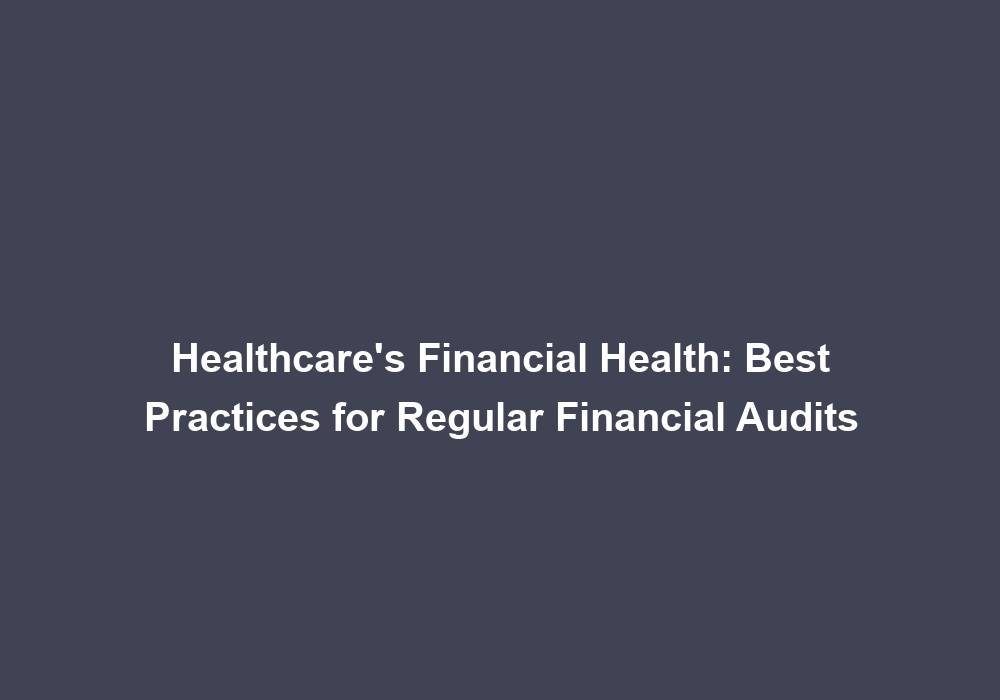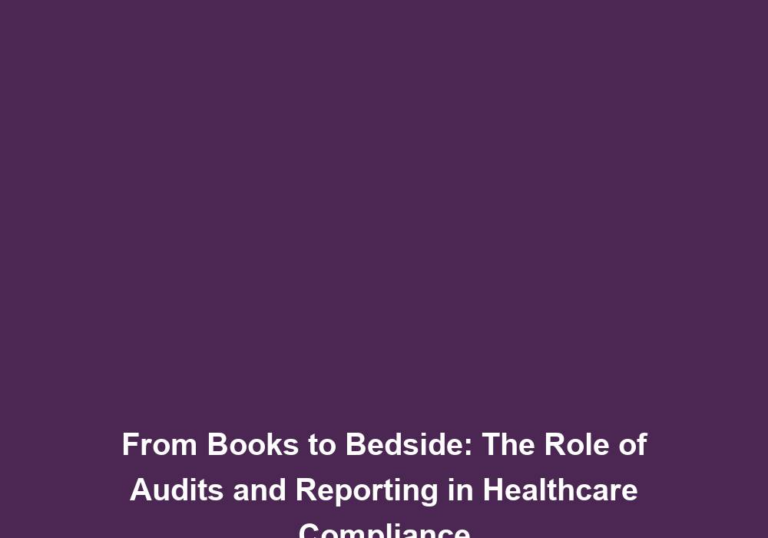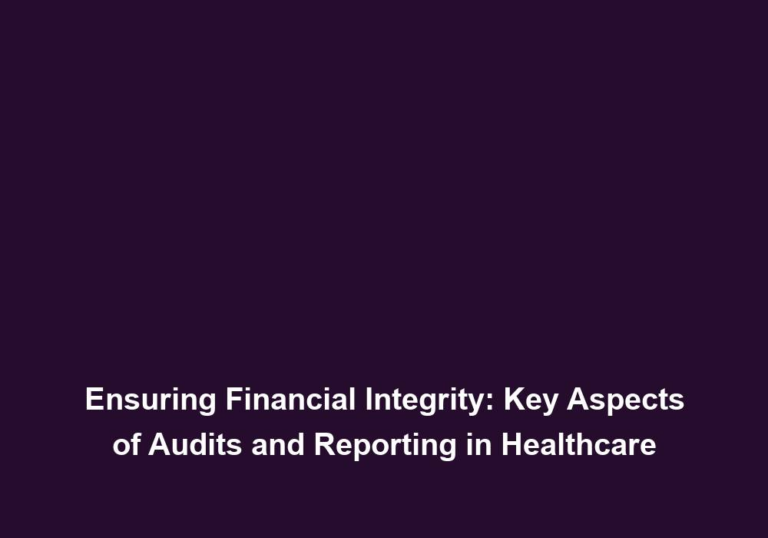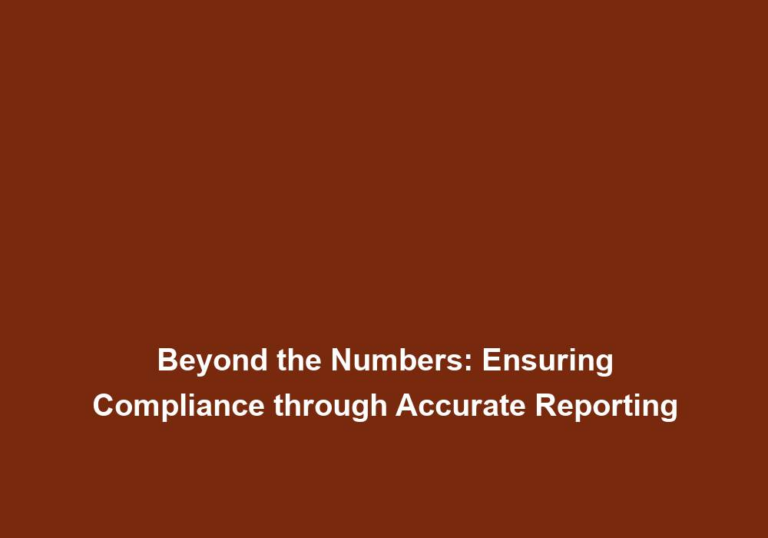Healthcare’s Financial Health: Best Practices for Regular Financial Audits
In the ever-evolving healthcare industry, it is crucial for healthcare organizations to have a strong financial foundation. Regular financial audits play a vital role in ensuring the financial health and stability of healthcare institutions. By conducting these audits, healthcare organizations can identify potential risks, improve financial processes, and maintain compliance with regulatory standards. In this article, we will delve into the best practices for conducting regular financial audits in the healthcare sector.
Why are Regular Financial Audits Important?
Financial audits serve as a valuable tool for healthcare organizations to assess and monitor their financial performance. These audits provide an in-depth analysis of an organization’s financial records, transactions, and internal controls. By conducting regular audits, healthcare institutions can achieve the following benefits:
-
Risk Identification and Mitigation: Financial audits help in identifying potential risks, such as fraudulent activities, errors, and non-compliance with financial regulations. By discovering these risks early, organizations can take necessary steps to mitigate them, safeguard their financial assets, and prevent potential financial losses.
-
Enhanced Financial Transparency: Regular financial audits promote transparency by ensuring accurate financial reporting and disclosure. This transparency fosters trust among stakeholders, including patients, investors, lenders, and regulatory bodies. It helps showcase the organization’s commitment to financial integrity and ethical practices.
-
Improved Financial Processes: Through financial audits, healthcare organizations can identify inefficiencies, gaps, and areas for improvement in their financial processes. This enables them to streamline operations, reduce costs, and enhance overall financial performance.
-
Compliance with Regulatory Standards: The healthcare industry is subject to numerous financial regulations, such as the Health Insurance Portability and Accountability Act (HIPAA) and the Affordable Care Act (ACA). Regular financial audits ensure that healthcare organizations meet these regulatory requirements, avoiding penalties, legal repercussions, and damage to their reputation.
-
Preparation for External Audits: Regular internal financial audits help healthcare organizations prepare for external audits conducted by regulatory bodies, third-party auditors, or potential investors. By consistently reviewing financial records, processes, and controls, organizations can address potential issues before they are uncovered during external audits.
Best Practices for Conducting Regular Financial Audits
Now that we understand the importance of regular financial audits in the healthcare sector, let’s explore some best practices to ensure their effectiveness:
1. Establish Clear Objectives and Scope
Before initiating a financial audit, it is essential to define clear objectives and scope. This involves determining the specific areas and processes to be audited, such as revenue cycle management, billing and coding, accounts receivable, or vendor contracts. Clear objectives help auditors focus their efforts and ensure comprehensive coverage.
When establishing clear objectives and scope, consider the following:
- Identify the key financial processes and areas that require auditing.
- Prioritize areas with higher risks, such as billing and coding accuracy or vendor contract compliance.
- Determine the specific goals you want to achieve through the audit, such as identifying cost-saving opportunities or ensuring regulatory compliance.
By clearly defining the objectives and scope of the audit, you provide a roadmap for the auditors and ensure that the audit addresses the most critical areas of financial management.
2. Conduct Risk Assessment
Performing a thorough risk assessment is crucial to identify potential areas of financial risk within the organization. This assessment should consider internal and external factors that may impact financial operations, such as changes in healthcare regulations, technological advancements, or organizational restructuring. By understanding these risks, auditors can tailor their audit procedures accordingly.
During the risk assessment process, consider the following:
- Analyze historical financial data to identify patterns or trends that may indicate potential risks.
- Review internal controls and identify any weaknesses or gaps that may expose the organization to financial risks.
- Keep abreast of industry trends and regulatory changes that may impact financial operations.
By conducting a comprehensive risk assessment, you can focus the audit on areas of highest risk and develop appropriate audit procedures to mitigate those risks effectively.
3. Develop a Comprehensive Audit Plan
A well-planned audit is crucial for its successful execution. Develop a comprehensive audit plan that outlines the audit procedures, timelines, resources required, and the roles and responsibilities of the audit team. The plan should consider the organization’s specific objectives, risk assessment findings, and relevant regulatory requirements.
When developing the audit plan, consider the following:
- Break down the audit into manageable phases or tasks to ensure a systematic approach.
- Allocate appropriate resources, such as skilled auditors and necessary technology tools, to carry out the audit effectively.
- Define timelines and milestones to ensure the audit stays on track and is completed within the desired timeframe.
A comprehensive audit plan provides a structured approach to the audit process, ensuring that all necessary steps are taken to achieve the audit objectives.
4. Ensure Independence and Objectivity
To maintain the integrity of the audit process, it is essential for auditors to be independent and objective. This means avoiding conflicts of interest and ensuring that auditors are not directly involved in the areas under audit. Independence and objectivity help ensure unbiased assessments and accurate reporting of the organization’s financial health.
To ensure independence and objectivity during the audit:
- Assign auditors who are not directly responsible for the areas under audit.
- Establish policies and procedures to address conflicts of interest and ensure auditors maintain their independence throughout the audit process.
- Provide auditors with the necessary tools and resources to perform their work objectively, such as access to financial data and relevant documentation.
By maintaining independence and objectivity, the audit process remains free from bias and potential conflicts, resulting in reliable and trustworthy audit findings.
5. Implement Effective Internal Controls
Strong internal controls are the backbone of effective financial management. Healthcare organizations should establish robust control mechanisms to prevent and detect financial discrepancies, errors, and fraud. This includes segregation of duties, regular reconciliations, and implementing secure financial systems and software.
When implementing internal controls:
- Establish clear segregation of duties to ensure that no single individual has complete control over financial processes.
- Implement regular reconciliations and reviews of financial records to identify discrepancies or errors promptly.
- Utilize secure financial systems and software that provide adequate controls and safeguards against unauthorized access or manipulation of financial data.
Effective internal controls not only reduce the risk of financial errors and fraud but also contribute to the overall efficiency and accuracy of financial processes.
6. Emphasize Continuous Monitoring and Improvement
Financial audits should not be seen as isolated events; instead, they should be part of an ongoing process of continuous monitoring and improvement. Regularly review financial controls, policies, and procedures to ensure they remain effective and aligned with changing business needs and regulatory requirements. This proactive approach helps healthcare organizations stay ahead of potential risks and challenges.
To emphasize continuous monitoring and improvement:
- Establish a system for ongoing monitoring of financial processes, such as periodic reviews or automated alerts for anomalies.
- Encourage feedback from staff members involved in financial operations to identify areas for improvement.
- Stay informed about emerging trends, technologies, and regulatory changes that may impact financial management, and adjust processes accordingly.
By continuously monitoring and improving financial processes, healthcare organizations can proactively identify and address potential risks, ensuring ongoing financial health and stability.
7. Document Audit Findings and Recommendations
During the audit process, it is crucial to document all findings, observations, and recommendations. This documentation serves as a valuable resource for future audits and helps track the implementation of recommended actions. Clear documentation ensures accountability, transparency, and facilitates organizational learning.
When documenting audit findings and recommendations:
- Clearly summarize the findings, including any identified risks, weaknesses, or areas of improvement.
- Provide detailed recommendations on how to address the identified issues, including specific actions and timelines.
- Assign responsibility for implementing the recommendations to the relevant individuals or departments.
By documenting audit findings and recommendations, healthcare organizations can track progress, measure improvement, and ensure that identified issues are adequately addressed.
Conclusion
Regular financial audits are essential for maintaining the financial health and stability of healthcare organizations. By following the best practices outlined in this article, healthcare institutions can identify potential risks, improve financial processes, and ensure compliance with regulatory standards. Prioritizing regular financial audits demonstrates a commitment to transparency, financial integrity, and the overall well-being of the organization.







